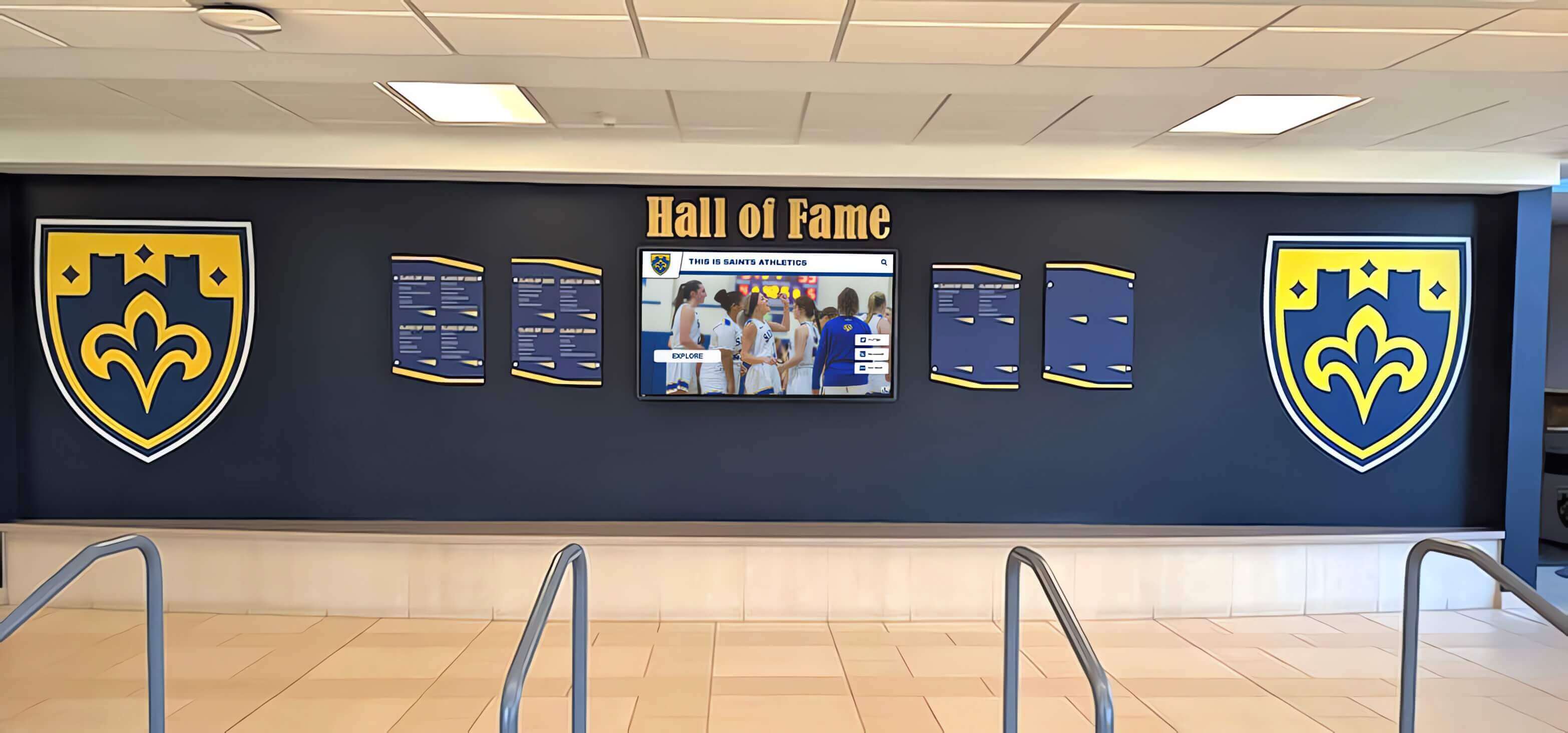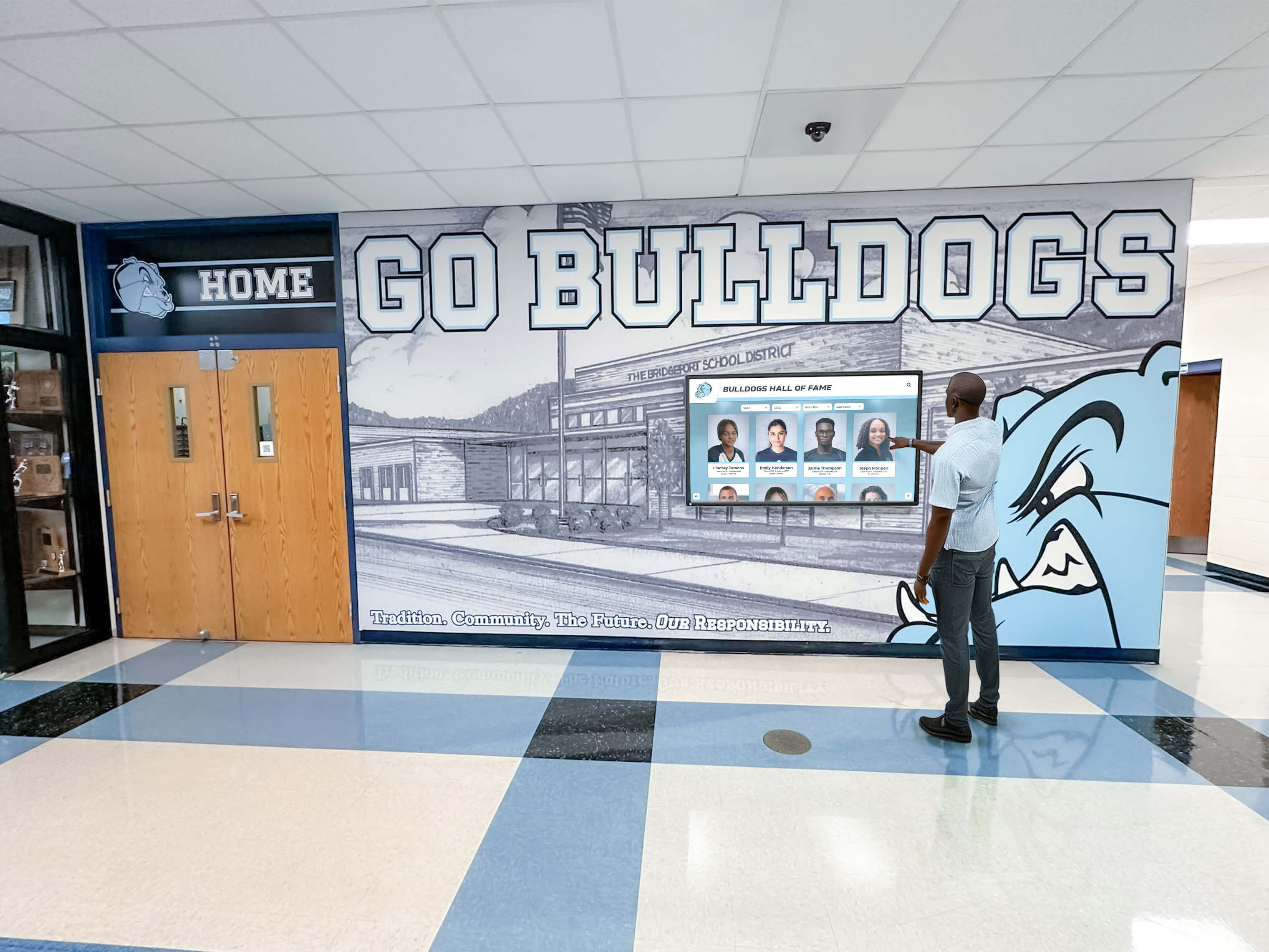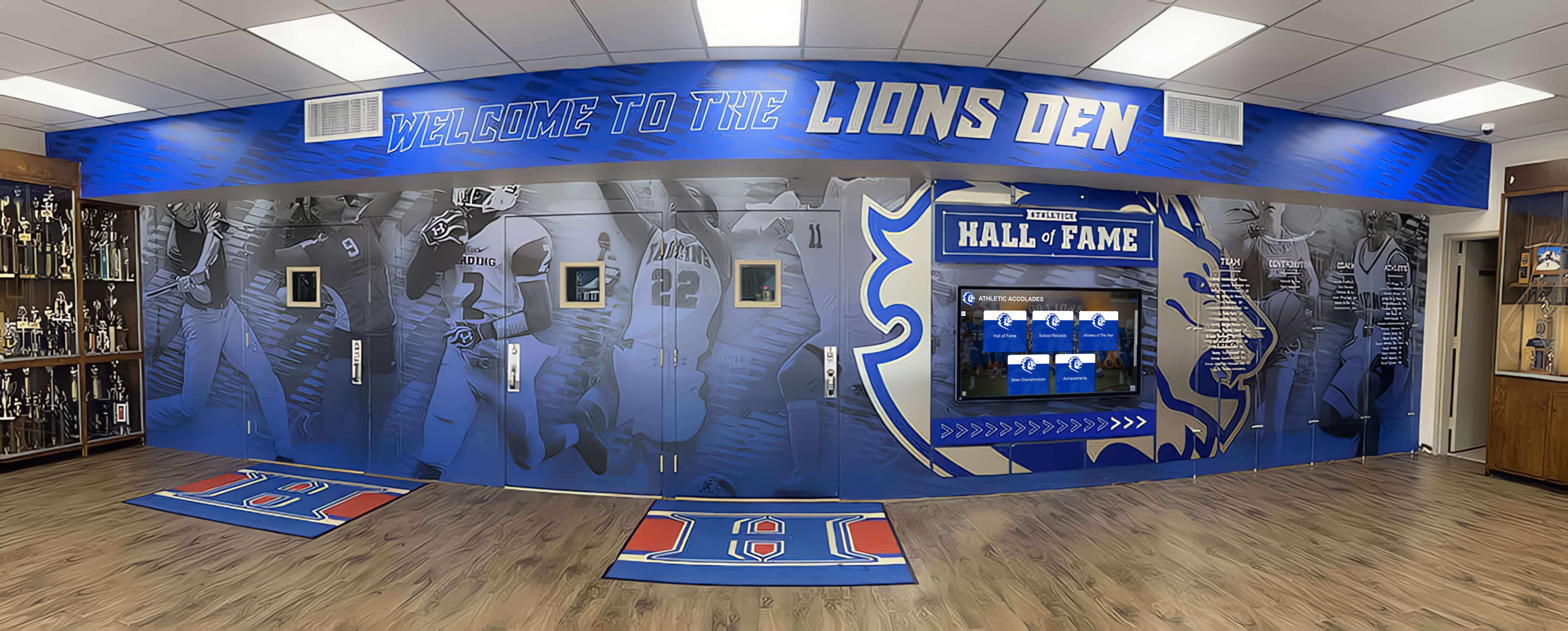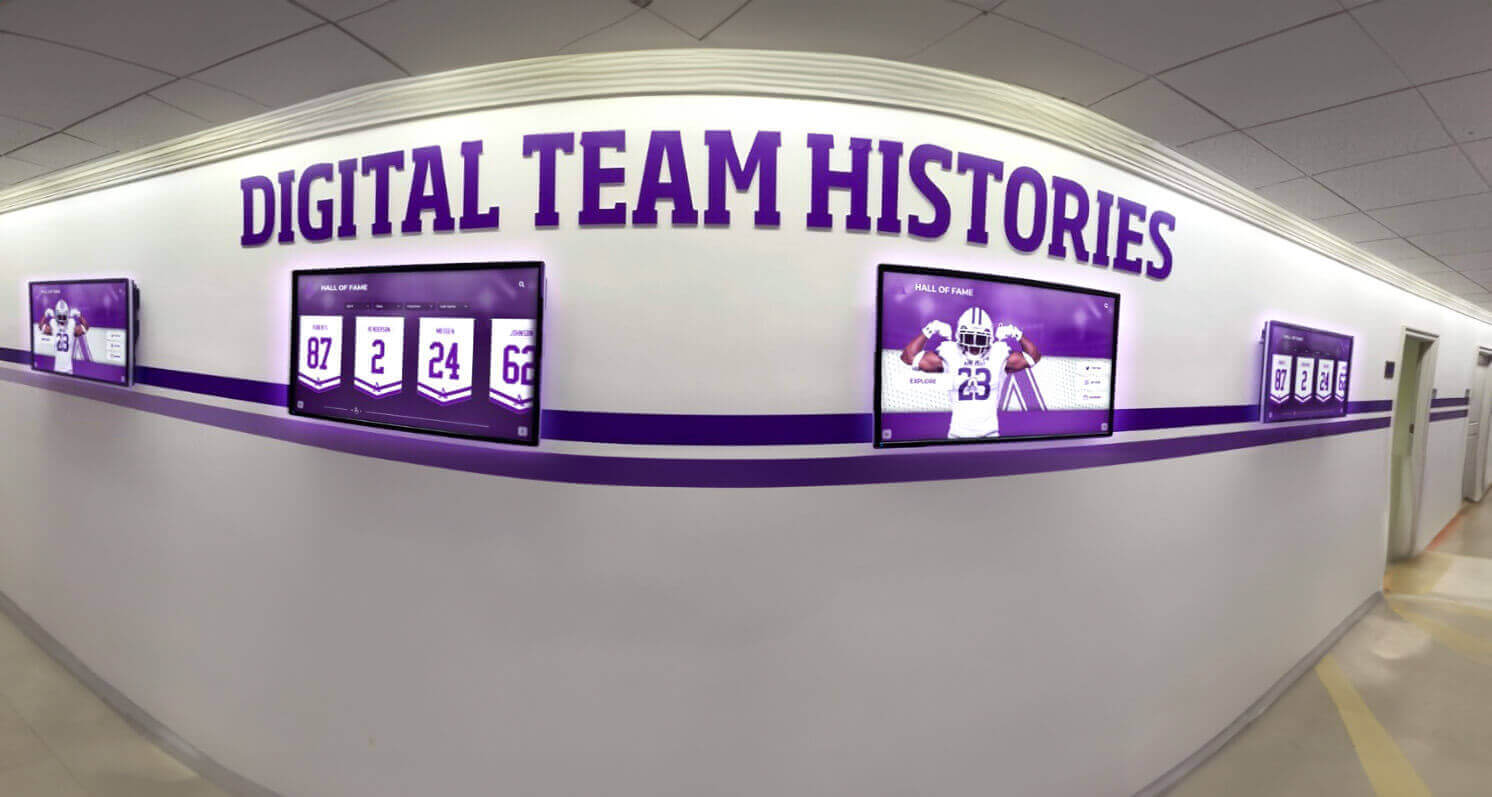Communities thrive when achievements are recognized, celebrated, and honored. Whether in schools, civic organizations, religious institutions, or neighborhood associations, the act of acknowledging accomplishments strengthens social bonds, inspires continued excellence, and creates shared narratives that define community identity. Yet many organizations struggle to implement recognition programs that genuinely honor accomplishments in meaningful, lasting ways that resonate with diverse stakeholders.
Effective recognition extends far beyond plaques gathering dust in storage or brief mentions at annual meetings. Modern approaches to honoring community accomplishments combine timeless principles of authentic appreciation with contemporary presentation methods that maximize visibility, accessibility, and emotional impact. When organizations thoughtfully design recognition programs that truly celebrate achievements, they create powerful tools for community building that generate value for decades.
Why Honoring Community Accomplishments Matters
Recognition programs serve essential functions in healthy communities. They validate individual contributions, reinforce shared values, inspire future achievement, and create tangible connections between past excellence and present aspirations. Schools recognize student achievement to motivate continued academic and athletic excellence. Religious institutions honor service to strengthen congregational bonds. Civic organizations celebrate volunteer contributions to sustain engagement and recruitment. Every community benefits from systematic approaches to acknowledging accomplishments that advance collective missions and values. Solutions like Rocket Alumni Solutions provide modern platforms specifically designed for comprehensive, accessible recognition that serves diverse community needs.
The Psychology of Recognition and Community Building
Understanding why recognition matters helps organizations design more effective programs that generate genuine impact rather than merely checking boxes on administrative to-do lists.
Recognition Validates Effort and Achievement
Human beings possess fundamental needs for acknowledgment and appreciation. When communities formally recognize accomplishments, they send powerful messages that effort matters, excellence is noticed, and contributions create lasting value. This validation operates on multiple levels including personal affirmation for individuals who achieved recognition, social proof that reinforces community values, inspirational modeling for those aspiring to similar achievement, and historical documentation preserving accomplishments for future generations.

Research consistently demonstrates that recognition significantly influences motivation and sustained engagement. Organizations with robust recognition programs report higher volunteer retention, increased participation in community activities, stronger intergenerational connections, and enhanced overall community pride and cohesion. These outcomes justify investments in thoughtful recognition systems that extend beyond perfunctory acknowledgment to create meaningful experiences for honorees and observers alike.
Recognition Reinforces Community Values
What organizations choose to recognize communicates what they value. Recognition programs effectively teach community members which behaviors, achievements, and contributions receive appreciation and celebration. Schools that recognize academic excellence signal that scholarship matters. Athletic programs highlighting sportsmanship alongside championships communicate that character equals competitive success. Religious communities honoring diverse forms of service demonstrate that all contributions strengthen congregational life.
Strategic recognition design aligns celebrated accomplishments with organizational mission and values. When alignment exists, recognition programs become powerful culture-building tools that reinforce desired behaviors and outcomes. Conversely, misalignment creates confusion about actual priorities versus stated values, undermining organizational integrity and community trust.
Recognition Creates Shared Narratives
Communities construct collective identities through stories about accomplishments, challenges overcome, and values demonstrated through action. Recognition programs contribute essential content for these narratives by documenting specific achievements, connecting individual accomplishments to community history, highlighting patterns of excellence across time, and creating accessible archives of community pride.

When recognition systems make accomplishments visible and accessible, they enable community members to understand institutional heritage, connect personal experiences to larger community stories, draw inspiration from predecessors’ achievements, and envision contributing their own chapters to ongoing excellence. These shared narratives prove especially valuable during challenging periods when communities need reminders of past resilience and capability. The approaches to storytelling through digital recognition demonstrate how modern platforms transform individual achievements into compelling community narratives.
Core Principles for Effective Recognition Programs
Successful approaches to honoring community accomplishments share common characteristics that maximize impact while avoiding common pitfalls that undermine recognition effectiveness.
Principle 1: Authenticity Over Formality
Genuine recognition resonates more powerfully than elaborate but impersonal gestures. Communities should prioritize authentic appreciation that reflects real understanding of accomplishments and their significance. This authenticity emerges through personal acknowledgment including specific accomplishments rather than generic praise, context explaining why achievements matter, stories connecting accomplishments to individuals and communities, and timely recognition soon after achievements occur.
Formal recognition ceremonies and permanent displays certainly serve important purposes, but they should supplement rather than replace immediate, personal appreciation that creates authentic emotional connections between accomplishments and acknowledgment.
Principle 2: Equity and Inclusivity
Effective recognition programs honor diverse forms of excellence and contribution. Organizations must avoid recognition systems that consistently favor certain groups, achievement types, or visibility levels while overlooking equally valuable but less prominent accomplishments. Inclusive recognition addresses multiple achievement categories including academic and athletic excellence, artistic and creative accomplishments, service and volunteer contributions, leadership and mentorship, and character demonstrations and values modeling.

Geographic, demographic, and temporal equity also matter. Recognition programs should celebrate accomplishments from all community segments, time periods, and organizational areas rather than concentrating acknowledgment on recent achievements, highly visible activities, or dominant subgroups. The comprehensive approach to inclusive digital recognition programs provides frameworks for systematically addressing equity in recognition design.
Principle 3: Visibility and Accessibility
Recognition creates maximum value when accomplishments remain visible and accessible rather than acknowledged once then forgotten. Traditional recognition approaches often fail this principle through limited display space forcing older accomplishments into storage, physical accessibility barriers restricting who can view recognition, geographic constraints limiting recognition to single locations, and minimal context reducing understanding of accomplishment significance.
Modern digital recognition platforms address these limitations by providing unlimited content capacity, 24/7 accessibility from any location, searchable databases enabling discovery, and rich multimedia context that brings achievements to life. Schools and organizations implementing solutions like digital walls of fame discover that increased visibility generates substantially greater community engagement than traditional approaches could achieve.
Principle 4: Sustainability and Maintenance
Recognition programs require ongoing attention and resources to remain relevant and valuable. Initial enthusiasm for new recognition initiatives often fades without sustainable systems ensuring regular updates, content accuracy maintenance, physical or technical upkeep, and continuous improvement based on feedback.
Organizations should design recognition approaches matching their realistic capacity for long-term management. Elaborate systems requiring extensive maintenance often deteriorate when staff changes or priorities shift, while simpler approaches with clear, manageable processes sustain value for decades.
Designing Recognition Programs That Honor Accomplishments Effectively
Systematic planning transforms recognition from ad-hoc gestures into strategic programs that consistently honor achievements while advancing community goals.
Step 1: Define Recognition Scope and Criteria
Begin by clearly establishing what accomplishments merit recognition and how selection occurs. Important scope considerations include achievement categories such as academic, athletic, service, leadership, and creative excellence, eligibility criteria like membership duration, minimum standards, or nomination requirements, selection processes involving committees, voting, automatic qualification, or administrative determination, and recognition frequency such as annual, seasonal, continuous, or milestone-based acknowledgment.

Well-defined criteria ensure consistency, fairness, and clarity about recognition purposes. They also help community members understand what excellence looks like and how they might contribute to institutional missions in ways that merit acknowledgment. Documentation of criteria and processes builds trust that recognition reflects genuine merit rather than favoritism or politics.
Step 2: Choose Appropriate Recognition Methods
Different accomplishment types and organizational contexts call for varied recognition approaches. Consider multiple recognition channels including public ceremonies and awards events, permanent physical displays, digital recognition platforms, publication features and announcements, social media celebration, and personal acknowledgment through letters or direct communication.
Effective programs often combine multiple methods providing different benefits. Public ceremonies create memorable experiences for honorees and families. Permanent displays provide ongoing visibility. Digital platforms enable widespread accessibility. Personal acknowledgment delivers intimate appreciation that resonates emotionally. The comprehensive guide to donor recognition ideas offers strategies applicable beyond fundraising to diverse community recognition contexts.
Step 3: Create Meaningful Recognition Experiences
Recognition generates maximum impact when experiences feel personal, thoughtful, and appropriate to accomplishments celebrated. This requires attention to honoree preferences including public versus private recognition styles, ceremony formality levels, and family inclusion opportunities; contextual appropriateness matching recognition scale to achievement significance; personal touches such as customized wording, individual stories, and authentic appreciation; and celebration timing that acknowledges accomplishments promptly while they remain salient.
Organizations should view recognition as creating experiences for honorees rather than merely documenting achievements. The question “How will this make recipients feel?” should guide recognition design throughout planning and implementation.
Step 4: Ensure Long-Term Visibility and Accessibility
Momentary acknowledgment provides limited value compared to recognition that remains accessible over time. This permanence requires strategic thinking about content preservation through archival-quality materials or digital storage, ongoing accessibility via physical location maintenance or online platforms, searchability enabling discovery of specific accomplishments, and context preservation maintaining understanding of significance as time passes.

Digital recognition platforms excel at long-term accessibility by maintaining complete archives without physical space constraints, enabling search by name, achievement, or time period, providing context through photos, videos, and descriptions, and offering remote access from any location at any time. The technical considerations for digital recognition display planning help organizations implement sustainable visibility solutions.
Recognition Program Applications Across Community Types
While principles remain consistent, effective implementation varies across different organizational contexts and community types.
Schools and Educational Institutions
Educational settings provide rich opportunities for recognizing diverse student, staff, and community accomplishments. Effective school recognition programs address academic excellence including honor rolls, subject awards, research achievements, and graduation distinctions; athletic accomplishments such as records, championships, individual honors, and sportsmanship recognition; arts and activities encompassing performance excellence, competition success, and creative achievements; service and leadership highlighting volunteer hours, student government, and mentorship; and staff excellence recognizing teaching innovation, service milestones, and professional achievement.
Comprehensive approaches ensure all students find paths to recognition rather than celebrating only highly visible athletes or top academic performers. The strategies for increasing school pride through recognition demonstrate how acknowledgment programs strengthen entire school cultures when designed inclusively.
Religious and Faith Communities
Religious institutions honor accomplishments that strengthen congregational life and advance spiritual missions. Recognition programs in these contexts typically address service contributions such as volunteer hours, committee participation, and ministry leadership; faith development milestones including confirmations, ordinations, and educational completion; community support encompassing mentorship, pastoral care, and outreach participation; and longevity recognition celebrating membership anniversaries and lifetime dedication.
Religious community recognition should align with theological values and congregational culture. Approaches honoring humble service prove more appropriate than those emphasizing individual achievement in contexts where humility represents a core virtue. The specialized guide to touchscreen software for religious institutions addresses unique considerations for digital recognition in faith communities.
Civic Organizations and Community Groups
Civic organizations depend heavily on volunteer contributions that recognition programs can acknowledge and encourage. Typical recognition categories include leadership service through board participation and organizational governance, program delivery via direct service and program facilitation, fundraising support including event coordination and donation campaigns, membership engagement through consistent participation and peer recruitment, and milestone celebrations such as longevity awards and service anniversaries.

Civic recognition faces unique challenges including volunteer diversity with varied motivations for participation, resource limitations affecting recognition program budgets, and succession concerns requiring recognition systems that outlast individual leaders. The examination of community impact from recognition programs provides evidence-based insights into how acknowledgment strengthens civic organizations.
Corporate and Workplace Recognition
Businesses increasingly recognize that employee accomplishment acknowledgment improves retention, productivity, and workplace culture. Workplace recognition programs typically celebrate performance milestones such as sales achievements and project completion, longevity including service anniversaries and retirement celebrations, innovation through problem-solving and process improvements, collaboration highlighting teamwork and cross-functional contributions, and values demonstration such as customer service and cultural embodiment.
Effective corporate recognition balances individual and team achievements while ensuring equitable access to recognition opportunities across roles, departments, and visibility levels. The approaches for employee recognition through touchscreen displays demonstrate how businesses leverage technology for systematic workplace acknowledgment.
Modern Technology for Honoring Community Accomplishments
Digital platforms have transformed recognition possibilities by eliminating traditional limitations while adding capabilities that physical approaches cannot provide.
Advantages of Digital Recognition Systems
Technology-enabled recognition offers substantial benefits over traditional physical-only approaches including unlimited capacity for comprehensive historical archives, multimedia enhancement through photos, videos, and rich context, remote accessibility from anywhere at any time, powerful search enabling instant discovery of specific accomplishments, easy updates without physical labor or expense, analytics tracking engagement and popular content, and integration capabilities connecting recognition to websites and social media.
These advantages prove particularly valuable for organizations with extensive recognition needs, limited physical space, geographically dispersed communities, or substantial historical archives worth preserving. Solutions like digital trophy cases demonstrate how technology transforms recognition capacity and accessibility.
Interactive Touchscreen Displays
Wall-mounted touchscreen displays provide prominent, engaging platforms for community recognition in physical spaces. These interactive systems enable intuitive browsing and searching, prominent placement in high-traffic areas, impressive visual impact attracting attention, multimedia presentation including video and audio, and regular content updates maintaining freshness and relevance.

Educational institutions, religious facilities, corporate offices, and civic centers increasingly deploy touchscreen recognition displays that serve both practical documentation and inspirational purposes. The comprehensive guide to touchscreen hall of fame implementation details planning and deployment considerations for these systems.
Online Recognition Platforms
Web-based recognition extends access beyond physical locations, enabling community members anywhere to explore accomplishments, share discoveries, and maintain connections. Online platforms particularly benefit alumni and former members maintaining interest from distant locations, families researching relatives’ accomplishments, prospective members evaluating organizations, and community historians documenting institutional heritage.
Effective online recognition requires mobile-responsive design ensuring accessibility across devices, intuitive navigation enabling easy discovery, social sharing capabilities amplifying recognition reach, search engine optimization making content discoverable, and regular updates maintaining current relevance. The strategies for creating virtual halls of fame provide implementation frameworks for web-based recognition systems.
Hybrid Approaches Combining Physical and Digital
Many organizations discover that hybrid approaches combining traditional physical recognition with digital enhancements provide optimal results. Common hybrid configurations include traditional plaques or trophies augmented with QR codes linking to detailed digital content, physical displays highlighting featured accomplishments while digital platforms provide comprehensive archives, recognition ceremonies captured digitally for ongoing accessibility, and printed programs or materials incorporating links to online recognition platforms.
Hybrid approaches honor tradition while embracing technology’s advantages, often satisfying diverse stakeholder preferences for recognition styles. They also provide transition pathways for organizations incrementally modernizing recognition approaches without abandoning valued traditions.
Creating Sustainable Recognition Programs
Long-term success requires systematic approaches ensuring recognition programs remain active, relevant, and valued over years and decades.
Establish Clear Roles and Responsibilities
Recognition programs falter when responsibility remains unclear or concentrated with single individuals. Sustainable approaches distribute responsibility across multiple roles including selection committees evaluating nominations and determining recognition, content managers entering information and maintaining accuracy, technical administrators managing platforms and systems, communication coordinators publicizing recognition and engagement, and executive sponsors providing resources and strategic oversight.

Documentation of roles, processes, and access credentials ensures programs survive staff transitions and organizational changes that inevitably occur over time. Succession planning prevents recognition systems from becoming dependent on individuals whose departures leave programs without knowledgeable management.
Develop Consistent Update Processes
Regular content updates maintain recognition program relevance and engagement. Effective processes establish clear schedules for adding new accomplishments, defined workflows for information gathering and verification, quality standards ensuring accuracy and completeness, communication protocols publicizing new recognition, and periodic comprehensive reviews ensuring historical content accuracy.
The rhythm of updates should match organizational cycles and accomplishment timing. Schools might update quarterly following each grading period or season. Religious communities might update following major religious seasons or annual cycles. Civic organizations might update following board meetings or program years. The guide to digital hall of fame maintenance provides systematic approaches to ongoing recognition program management.
Budget for Long-Term Sustainability
Recognition programs require ongoing resources beyond initial implementation. Sustainable budgeting addresses annual content development time for research, entry, and verification, technical maintenance including hosting, updates, and support, physical maintenance for displays, signage, and facilities, program promotion through communications and events, and periodic enhancement adding features or expanding scope.
Organizations should calculate total cost of ownership over five to ten years when comparing recognition approaches. While digital systems may require higher initial investment than traditional physical recognition, lower ongoing costs often result in favorable long-term economics alongside substantially greater capability and accessibility.
Measure Impact and Engagement
Regular assessment ensures recognition programs achieve intended goals while identifying improvement opportunities. Valuable metrics include participation tracking how many community members achieve recognition, engagement measuring views, searches, and interaction time, satisfaction gathering honoree and community feedback, retention examining whether recognition influences continued engagement, and cultural impact assessing recognition influence on community pride and identity.

Data-informed optimization improves programs over time based on actual use patterns and community preferences rather than assumptions about what should work. The frameworks for measuring digital recognition success apply across diverse organizational contexts and recognition types.
Common Recognition Program Mistakes to Avoid
Understanding typical pitfalls helps organizations design more effective programs that maximize impact while avoiding predictable problems.
Mistake 1: Inconsistent Recognition Criteria
Recognition systems lacking clear, consistent criteria create perceptions of favoritism, politics, or arbitrary decision-making. This inconsistency undermines program credibility and community trust while generating resentment among those overlooked. Organizations must establish transparent criteria and apply them uniformly across time, ensuring fairness and maintaining confidence that recognition reflects genuine merit.
Mistake 2: Recognition Without Context
Listing accomplishments without explanation of their significance limits recognition impact. Context transforms raw data into meaningful stories by explaining what achievements required, why accomplishments mattered, how achievements contributed to communities, and where accomplishments fit in broader institutional histories. The approaches to content planning for digital recognition demonstrate how contextual enhancement transforms basic acknowledgment into compelling storytelling.
Mistake 3: Neglecting Historical Recognition
Organizations focusing exclusively on recent accomplishments while ignoring historical achievements miss opportunities to honor those who built foundations for current success. Comprehensive recognition programs balance current and historical content, ensuring all eras receive appropriate acknowledgment. This temporal equity demonstrates institutional commitment to honoring all contributors regardless of when they served.
Mistake 4: Limited Accessibility
Recognition concentrated in single locations or difficult to access provides limited value. Modern programs should ensure accomplishments remain accessible through multiple channels including physical displays in convenient locations, online platforms available anywhere, mobile-friendly interfaces for smartphones and tablets, and search capabilities enabling quick discovery. The complete guide to digital recognition accessibility addresses inclusive design ensuring all community members can access recognition.
Mistake 5: Inadequate Maintenance
Initial enthusiasm for new recognition programs often fades without systems ensuring ongoing management. Programs that become outdated, inaccurate, or neglected communicate that accomplishments no longer matter and recognition was merely performative. Sustainable programs require realistic planning for long-term maintenance including time allocation, budget commitment, and succession planning that outlasts individual leaders.
Implementing Recognition Programs: Practical Steps
Organizations ready to enhance community accomplishment recognition should follow systematic implementation approaches.
Phase 1: Assessment and Planning (Months 1-2)
Evaluate current recognition approaches identifying strengths, weaknesses, and gaps. Engage stakeholders through surveys, focus groups, or interviews understanding recognition preferences and priorities. Research options including recognition methods, technology platforms, and budget requirements. Define program scope establishing what accomplishments will receive recognition and how. Document criteria creating transparent standards for recognition decisions.
Phase 2: Design and Development (Months 3-4)
Select recognition methods matching organizational needs and resources. Choose appropriate platforms whether physical displays, digital systems, or hybrid approaches. Design recognition formats determining how accomplishments will be presented. Create content standards ensuring consistency and quality. Develop selection processes establishing how recognition decisions occur. Budget completely accounting for initial and ongoing costs.

Phase 3: Content Development (Months 5-6)
Compile historical accomplishments researching archives, records, and institutional memory. Verify information ensuring accuracy through multiple sources. Create rich content developing profiles, context, and multimedia. Organize systematically establishing logical categorization and navigation. Quality review conducting thorough checking before launch.
Phase 4: Implementation and Launch (Month 7)
Install physical components including displays, signage, or facilities. Configure digital platforms with branding, content, and functionality. Train staff on management processes and tools. Conduct soft launch with limited audience to identify issues. Gather feedback and refine addressing problems and incorporating suggestions.
Phase 5: Public Launch and Promotion (Month 8)
Host recognition event celebrating program launch and initial honorees. Communicate broadly through all available channels announcing program and encouraging engagement. Demonstrate features educating community about capabilities and access. Solicit nominations encouraging participation in ongoing recognition. Celebrate achievements highlighting specific accomplishments and honorees.
Phase 6: Ongoing Operation and Enhancement (Months 9+)
Maintain regular updates adding new accomplishments systematically. Monitor engagement tracking usage and identifying popular content. Gather feedback soliciting community input on improvements. Conduct periodic reviews assessing effectiveness and identifying enhancements. Plan expansions considering additional categories, features, or scope.
Future of Community Recognition
Recognition practices continue evolving as technology advances and community expectations change. Forward-thinking organizations should consider emerging trends.
Personalized Recognition Experiences
Artificial intelligence and data analytics enable increasingly personalized recognition that adapts to individual interests. Future systems might automatically highlight accomplishments relevant to specific viewers based on their connections, preferences, or search patterns. This personalization increases engagement by surfacing most meaningful content for each community member.
Social Recognition and Sharing
Integration with social media platforms amplifies recognition reach beyond organizational boundaries. Community members discovering accomplishments can easily share discoveries with personal networks, extending recognition visibility and building institutional reputation. This social dimension transforms recognition from one-way institutional acknowledgment into community conversations that deepen engagement.
Multimedia Storytelling
Declining costs for video production and increasing comfort with digital media enable richer storytelling around community accomplishments. Future recognition increasingly incorporates video interviews, photo galleries, audio reflections, and interactive timelines that bring achievements to life in ways static text never could. The guide to creating video content for digital recognition provides practical approaches to multimedia enhancement.
Cross-Institutional Recognition Networks
Technology enables recognition that transcends organizational boundaries, allowing communities to participate in larger recognition networks. Alumni might discover their accomplishments recognized across multiple institutions they attended or served. Volunteers might see comprehensive recognition across all organizations where they contributed. These networks create richer pictures of individual contributions while strengthening connections between related organizations.
Building Community Through Recognition
Honoring community accomplishments represents far more than administrative obligation or perfunctory acknowledgment. Thoughtful recognition programs serve as powerful community-building tools that validate contributions, reinforce values, inspire excellence, and create shared narratives defining institutional identity.
Organizations investing in systematic recognition approaches discover multiple benefits including increased engagement and participation, stronger community pride and cohesion, enhanced recruitment and retention, improved organizational culture, and deeper connections across generations. These outcomes justify thoughtful planning and sustained commitment to recognition excellence.
Modern technology eliminates traditional recognition limitations while adding capabilities that previous generations could never access. Digital recognition platforms provide unlimited capacity, universal accessibility, rich multimedia context, powerful discovery tools, and sustainable management that traditional approaches cannot match. Solutions like Rocket Alumni Solutions specialize in helping diverse organizations implement recognition programs that honor accomplishments effectively while serving community needs for decades.
Whether you lead schools seeking to celebrate student achievement, religious communities honoring service and faith, civic organizations recognizing volunteers, or businesses acknowledging employees, systematic approaches to recognition create lasting value. Every accomplishment deserves appropriate acknowledgment. Every contribution strengthens communities. Every achievement inspires others to excellence. Recognition programs making these connections visible and accessible become cornerstones of thriving communities where people feel valued, inspired, and connected to purposes larger than themselves.
The question isn’t whether your community has accomplishments worth honoring—every community does. The question is whether your current recognition approaches truly honor those accomplishments in ways that maximize inspiration, accessibility, and lasting impact. Organizations answering honestly often discover significant opportunities to strengthen communities through more effective recognition that celebrates excellence while building the pride and connection that healthy communities require.


































